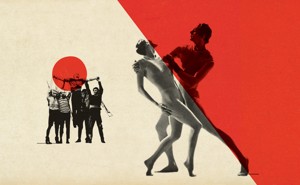You know of the disease in Central Europe called dancing disease ...
There also exists a dancing happiness of the soul. Its most dangerous
aspect is that one is unaware of its coming. That is why you have to be
careful. As soon as you notice the slightest sign of happiness, the
moment you become aware of the gain of a certain naughtiness, of
enthusiasm and zest, take it as a warning. You should realize that your
soul rejoys if you start practicing folklore steps on the way to
school. Chamillova's Tatranka
Jarné hry: opisy choreografie pre detské tanečné súbory
Marta Chamillová
In my schoold days, no personality was as colourful as the architect of
the dancing group Tatranka, Miss Marta Chamillova aka Stara Chamilova. No one could tell
folkloric stories as Chamillova did. I loved the way Chamillova talked
about Juraj Janosik, the Robin Hood of the Slovak legend. Janosik is
our tragic hero, our Richard III, our Oedipus, our Lear. Time has given
him depth. He was this sort of open, outdoorsy creature, very
gutsy.
Chamillova helped me see the extraordinary in ordinary songs, steps,
springs. Janosik or gural dance steps had come to occupy a special
place in the collective Slovak folkloric psyche. They symbolise much
that has been lost to communism - wild jumping, self-sufficiency and a
sense of unabridged freedom. Slovaks, like Janosik, identify with the
underdog. Janosik is so many Slovak stories all at once, he consumes so
much of our culture: the poor kid who cared for poor; the clever kid
who got caught in the injustice of slavery; the momma's boy denied to
see his father's funeral; the loser who won; the winner who lost; the
kid who never fit in the Hungarian idea of slavery. He cared nothing
for Hungarian politics; he cared for nothing but politics and
Choreographer of Slavic Folkloric Tales: Marta Chamillova Tatranka Story
Podnietila nás k tomu zberateľská aktivita detí z folklórneho súboru ZDŠ Tatranka vo Vrbove (okr. Poprad) a bratislavských detí: Roku 1972-73 v bratislavskom prostredí uskutočnila dotazníkový aj osobný výskum poslucháčka národopisu a folkloristiky Natália Tomanová. Výsledky r. 1973 spracovala v diplomovej práci "Detský folklór v súčasnosti. Hry bratislavských detí." Na stranách 100-105 uvádza súhrn materiálu - 145 názvov hier. Pod niektorými názvami sa pravdepodobne skrývajú tie isté hry (s gumou - Skákačka s gumou, chytačka - Na chytku, Na mamu - Na mamu a otecka, Pláva mydlo po Dunaji - Pláva mydlo po jazere, Pešek - Ide[/] Pepek okolo - Ide Pešek okolo - Smradľavé vajce, Opacovaná schovávačka - Schovka - Anglická schovávačka - Na vyklepávačku - Skrývačka, Šípová Ruženka - Ruženka, Na vojáčka - Na vojakov, Žmurkaná - Na žmurkanú a možno i ďalšie) a zo zoznamu sme vylúčili jednotky "preťahovaná so špagátom," "bežať opreteky," "závody v behu," "závody na bicykloch" a "závody na kolobežke," ktoré nepovažujeme za hry (ide o športový pretek, pohybovú zábavu), takže počet v Bratislave zozbieraných hier by dosahoval cifry 130. Naproti tomu učiteľka a vedúca Tatranky Marta Chamillová do tanečného oddelenia Osvetového ústavu v Bratislave poslala začiatkom r. 1974 zoznam sto hier "ktoré sa hrajú deti Vrbova, Žákoviec, Abrahámoviec." - Poslala ich v rámci akcie "deti zbierajú ľudové tradície" (výskumníčkami boli Gabriela Regecová, Erika Kurucová, Anna Koľová - členky Tatranky). Na vysvetlenie snáď ešte toľko, že zamagurská obec Vrbov je stredisková a do vyšších ročníkov jej ZDŠ chodia i deti z okolitých dedín.
Chamillova and Oral History
But whom did these artists, trapped behind the Iron Curtain, have to compare him with? Their praise could easily be dismissed as nationalist hype. After all, the standard American view is that the Soviet vanguard of ballet barely outlived Lenin. The ferment was in Paris, where the young Russian émigré George Balanchine collaborated with Stravinsky on the groundbreaking Apollo for Diaghilev’s Ballets Russes. Then the action traveled west, with Balanchine. Thanks to him and his New York City Ballet, angular, plotless, modernist works replaced silly story ballets as the art form’s pride. Without Balanchine, the thinking goes, ballet would have buried itself in the past—and indeed, since the master’s death, in 1983, it has struggled to chart a future.
